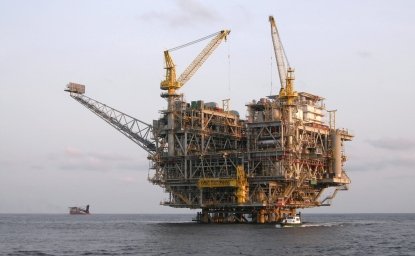Mammoth energy infrastructure development is keeping China’s economic engine running at a fast clip. Nevertheless, China’s urban and industrial centers on the east coast still face energy shortages, in large part because most wind, coal and hydropower plants are concentrated in the country’s inland provinces.
The West - East Electricity Transfer Project, initiated in the Tenth Five-Year Plan (2000-2005), was designed to bring investment and development to China’s lagging west while satisfying the growing electricity needs of the country’s eastern provinces. The project’s first phase has been and is continuing to expand the western provinces’ electricity-generating capacity, primarily through the construction of new coal bases and hydroelectric dams.
The project’s second, ongoing component is the construction of three electricity-transmission corridors, which are essentially three vast networks of electrical transmission lines that connect newly built generation capacity in the North, Central and South to China’s electricity-hungry coast (see arrows on map). Each of the corridors is expected to exceed 40 gigawatts (GW) in capacity by 2020—a combined capacity equivalent to 60 Hoover Dams. The seven recipient provinces — Beijing, Tianjin, Hebei, Shanghai, Zhejiang, Jiangsu, and Guangdong — together consume nearly 40 percent of China’s electricity.
Northern Corridor
The Northern Corridor connects hydropower stations on the Yellow River and coal bases in Inner Mongolia, Shanxi, Shaanxi, Xinjiang, Qinghai, and Gansu provinces to Hebei Province and two megacities: Beijing and Tianjin.
Central Corridor
The Central Corridor connects hydropower stations in the upper reaches of the Yangtze River in Qinghai, Sichuan, Northern Yunnan, Chongqing, and Hubei (and will include Tibet by 2020) to China’s Yangtze River Delta (YRD) mega-region incorporating Zhejiang, Jiangsu, and Shanghai. These three provinces consume nearly 20 percent of China’s electricity. The Three Gorges Dam is integral to this Central Corridor, sending 35 percent of its electricity to the YRD.
Southern Corridor
The Southern Corridor sends electricity to China’s manufacturing hub in Guangdong Province from new coal bases in Guizhou, Guangxi and Yunnan provinces and from new hydropower stations in those provinces on the Salween, Mekong, and other rivers. Most of the 60 new medium and large dams targeted in the 12th Five-Year Plan would be built in this region. The southern corridor also receives energy from the Three Gorges Dam, albeit only about 16 percent of the dam’s output.
Growth in electricity exports from China’s western provinces brings energy security to the east coast, but exacerbates water and food insecurity in the western China’s ecologically fragile ecosystems. Because China’s eastern economic powerhouses rely on western-made electricity, energy sectors in the western province stake priority over residential and agricultural water users.
In other words, since so much of China’s GDP depends heavily on electricity produced in its western provinces, the energy sector trumps all other users when it comes to water. China must address these vulnerabilities – or choke points – to sustain its current growth.
Note: The arrows on the map are schematic representations of the energy corridors, illustrating the general regional origins, direction of flow, and destinations of electricity. The arrows should not be interpreted as actual transmission lines.
This map was created by James Conkling, fellow at Amnesty International, and Tyler Gibson, Research Assistant at the Wilson Center’s China Environment Forum. This map is part of CEF’s Choke Point: China research and reporting work with Circle of Blue. Special thanks to Zifei Yang for her help in finding the data, and Jennifer Turner and Katie Beck for their valuable input. We also want to acknowledge the support of the funders of CEF’s energy and water work—Vermont Law School, USAID, Skoll Global Threats Fund, Rockefeller Brother Fund and blue moon fund.
Source: China Energy Yearbook 2003, 2007, 2010; China Statistical Yearbook 2011

China Environment Forum
China’s global footprint isn’t just an economic one, it’s an environmental one. From BRI investments in Africa and Asia to its growing presence in Latin America, understanding China’s motivations, who stands to gain - and who stands to lose - is critical to informing smart US foreign policy. Read more

Explore More
Browse Insights & Analysis
La esencia de la infraestructura global: perspectivas del líder de la industria Matt Harris

Debunking the Patient Capital Myth: The Reality of China’s Resource-Backed Lending Practices

